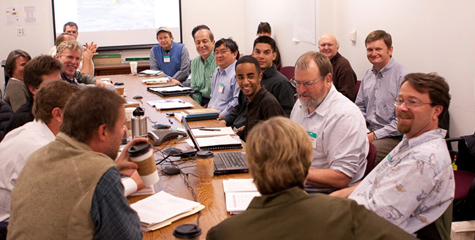

Mono Lake Committee staff and experts are hard at work reviewing the recently released draft “Synthesis of Instream Flow Recommendations” report.
The report is based on over a decade of supporting studies, monitoring, and detailed field work by the State Water Board-appointed expert stream scientists. The recommendations are a critical step forward in revising the timing, magnitude, and characteristics of water releases into Rush, Lee Vining, Parker, and Walker creeks to enhance the restoration of these important Mono Lake tributaries.
A prime question on our list is whether the recommended flow amounts (summer and winter base flows and spring peak flows) are appropriate for the needs of the stream system. This will include looking at components such as bedload movement capabilities, floodplain inundation, groundwater recharge, trout requirements, and macroinvertebrate habitat.
After establishing the scientific recommendations, the next question up will be: Can the current Los Angeles Aqueduct infrastructure reliably deliver the new recommended flows? And if not, what improvements are necessary?
You can check out the report by following the links from our Streamflow Center. Stay tuned for further updates!
The streamflow recommendations are important because they will revise the current flow requirements that the Los Angeles Department of Water & Power (DWP) has been operating under, and are critical to the continued restoration success of Mono Lake’s tributary streams.
Due to the significance of these changes, the Committee has rallied additional scientific expertise to supplement our existing team of experts. Our analytical team will be reviewing the recommendations on several levels. The fundamental questions we will be asking are:
First: Are the flow amounts (summer and winter base flows and spring peak flows) appropriate for the needs of the stream system? This will include looking at components such as bedload movement capabilities, floodplain inundation, groundwater recharge, trout requirements, and macroinvertebrate habitat.
Second: Can the current Los Angeles Aqueduct infrastructure reliably deliver the new recommended flows? If not, what improvements are necessary?
Third: How will DWP propose to manage the system to achieve both its goal of water exports and also its mandate to restore Mono Lake and its tributary streams? Is its proposed operational management plan reliable? How do we ensure that restoration goals are achieved and what assurances do we have if things start to go wrong?
While the draft streamflow recommendations were just released in February, years and years of supporting studies, research review, and monitoring have provided the scientists with a wealth of information on which to base their recommendations.
